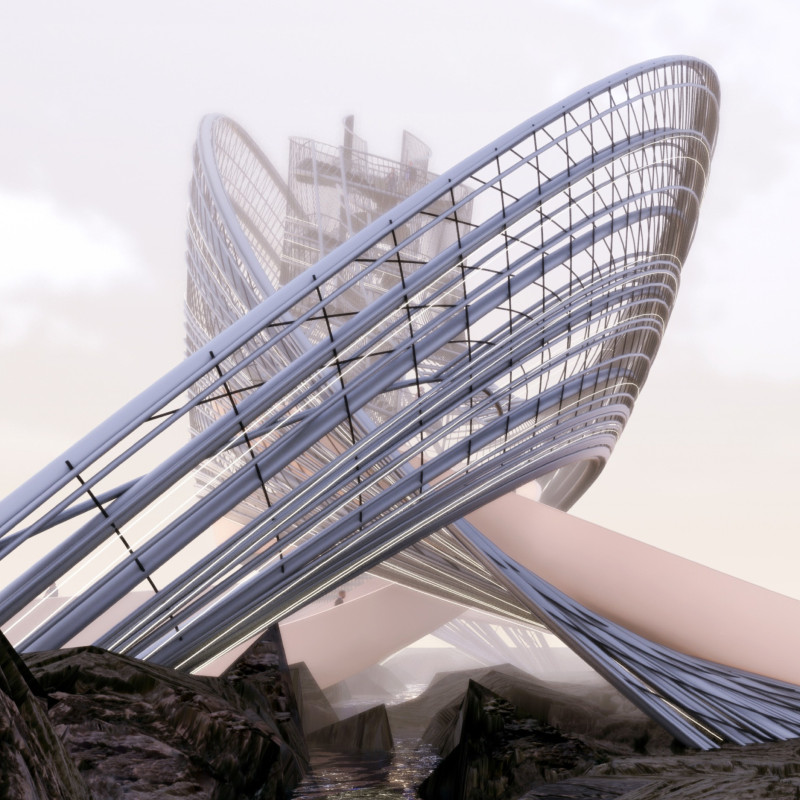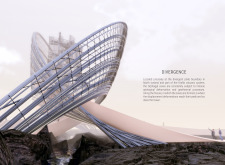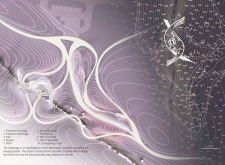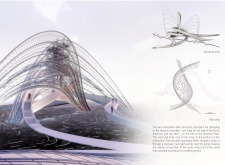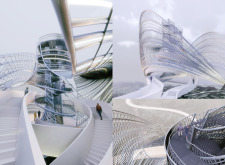5 key facts about this project
The design integrates spacious public areas, quiet contemplation zones, and pathways that weave through the structure, allowing visitors a comprehensive experience of the site’s geological significance. The project seeks to engage with its environment and to enhance the visitor's understanding of tectonic processes.
### Architectural Form and Materiality
The unique approach of "Divergence" lies in its form, characterized by twisting structures that symbolically illustrate geological movements. The interlocking shell shapes create a striking architectural presence while offering functional spaces.
Material choices also reflect the surrounding environment and the intended durability of the building. The primary materials include steel for the structural framework, allowing flexibility, glass for transparency, concrete for the base and pathways, and aluminum as a facade material. This combination ensures that the building not only withstands significant geological factors but also provides a modern aesthetic that aligns with its setting.
### Relationship with the Landscape
The architectural design successfully integrates with the natural landscape, establishing a connection with the local topography and historical sites such as the Kvennagjá and Karlagjá caves. The external pathways mimic geological formations, leading visitors through various experience points that relate to the environment.
This emphasis on spatial experience enhances the project’s educational intent, as visitors are encouraged to explore the nuances of the geographical context while interacting with the architecture. Elements such as observation points and seating areas are thoughtfully situated to maximize the view of surrounding landmarks, offering a relevant and immersive experience.
Explore the complete project presentation for more details on architectural plans, sections, designs, and additional architectural ideas that shape the narrative of "Divergence."


